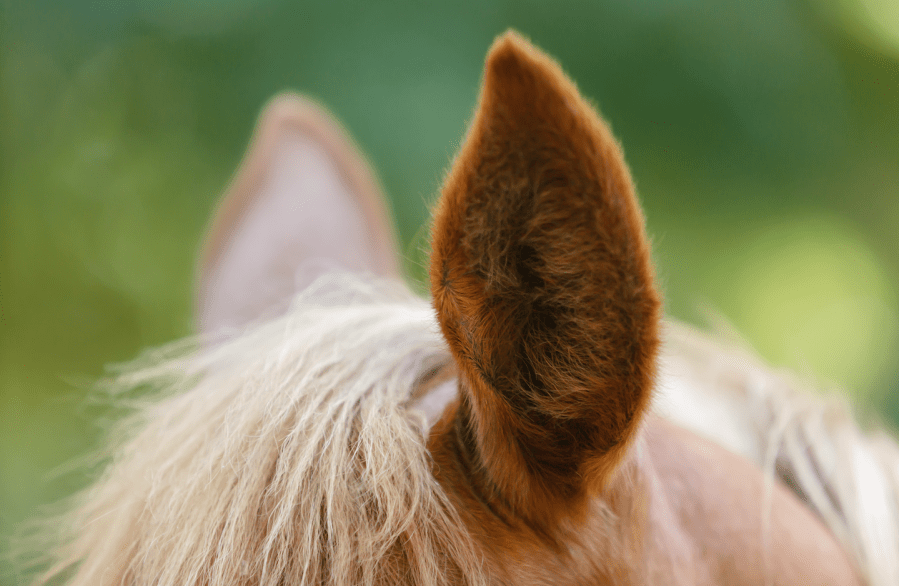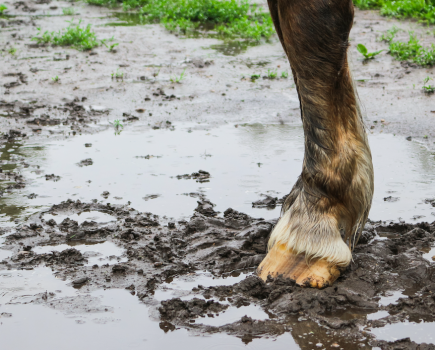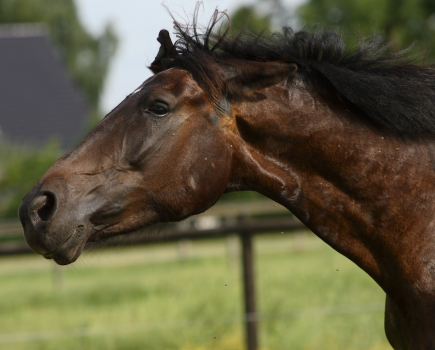You can tell a lot about the way a horse is feeling by their ear positions. The ears move a lot, with a wide range of movement (180°).
Their position and movement are a great indicator of where a horse’s attention is directed. They can also signal levels of excitement, fear, intrigue, and unhappiness.
When considering a horse’s behaviour and body language, their ears are just one piece of the puzzle — you need to consider the full picture in order to truly understand them.
On this page we will focus on ear positions, and also touch on other areas included in facial language, namely nostrils and eyes.
This is what a horse’s ear positions mean:
Ears pricked forwards
This means the horse is directing their attention and listening in front of them. Once they have satisfied their curiosity, the ears quickly relax.
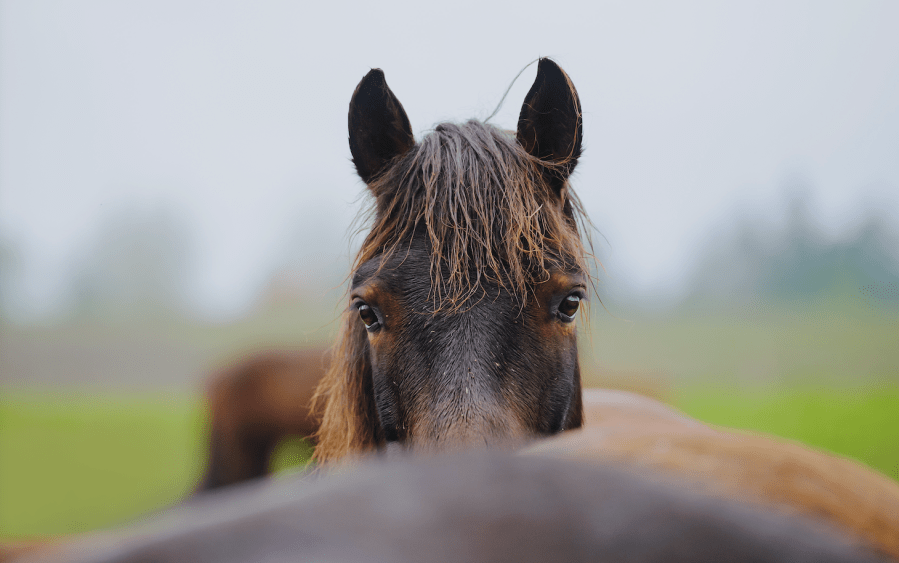
One ear turned backwards
If something behind your horse catches their attention, they may split their focus and turn one ear backwards to listen out for anything interesting.
Flicking ears back and forth
You will notice them do this a lot when you’re riding them. An ear flicking back towards you is a good sign that they are listening to you and engaged in their work.
The ear is also flicking forward because they are aware of what’s in front of them.
Ears turned to the side
This could mean that your horse is paying attention to something beside them or, if the ears are drooping to the side, it could indicate relaxation, drowsiness or pain.
Ears back
Ears turned backwards mean that your horse’s attention is focused behind them.
However, ears pinned back flat against their head (as pictured below) indicate aggression or fear.
How flattened the ears are is a great indicator of the severity of the horse’s threat.
A horse with their ears pinned flat back instantly looks very angry and you would be wise to keep away.
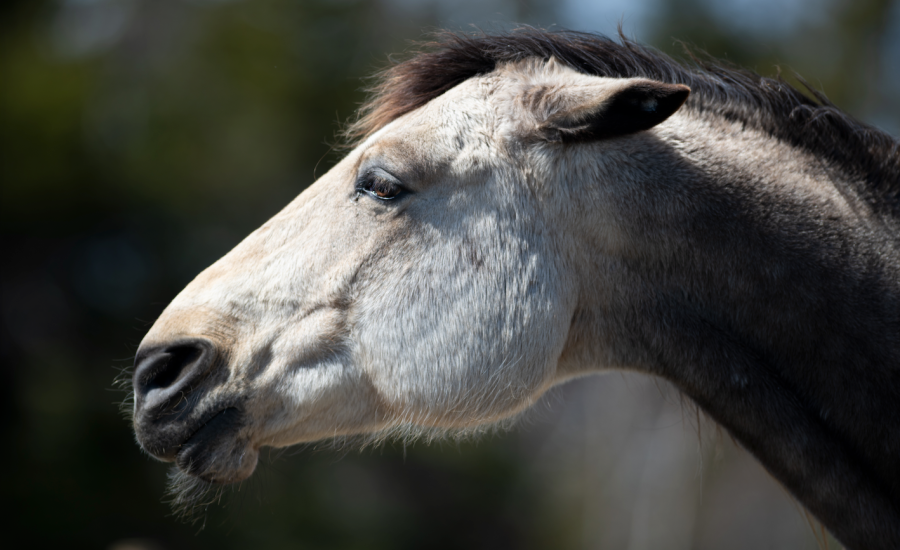
Eyes as mood indicators
A horse’s eyes are a core part of their facial language too.
Their eyes are the largest of any land mammal and vision is believed to be the horse’s primary sense.
It is really useful as a rider to understand how horses see, and to recognise that eyes can tell us a great deal about a horse’s emotional state — especially when considered in conjunction with ear positions.
Nervous/anxious horse
- If they are in a new, unfamiliar environment, for example, or they have heard/smelled/seen something unexpected at home or out riding, a nervous horse may have extremely expressive eyes.
- In a horse who is becoming nervous or anxious, the muscles in the inner brow area contract, causing their upper eyelid to change shape and the eye to become triangulated.
Tired horse
- A tired horse will probably have limited eye movement and a dull, vacant look. Like they are trying to go to sleep!
Stressed horse
- According to research, how many and the depth of wrinkles (or ‘worry lines’) forming above the horse’s eye is a good indicator of how stressed they are.
Signs of a stressed horse
The ear position of a horse who is stressed will usually be turned back.
A horse who is constantly stressed may have numerous deep wrinkles on their upper eyelid as their eyes are continually triangulating in this way.
Eye wrinkles are common in horses, but differ in number, depth and shape between individuals. It’s a good idea to get to know what is normal for your own horse, so that you can spot signs of any stress early.
A horse who isn’t blinking could be frozen in fear just prior to explosive behaviour.
A dull stare could be an expression of depression, illness or pain.
One of the first indicators that a horse is scared is in their eyes.
It’s important to bear in mind that horses use their whole body to communicate with each other — as well as with people.
All images © Shutterstock

